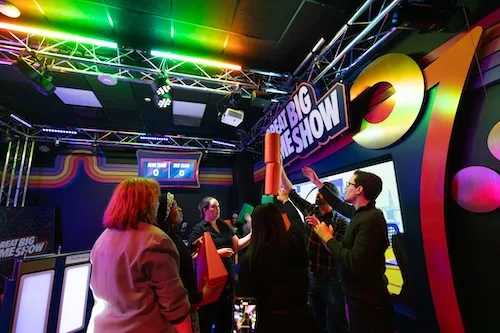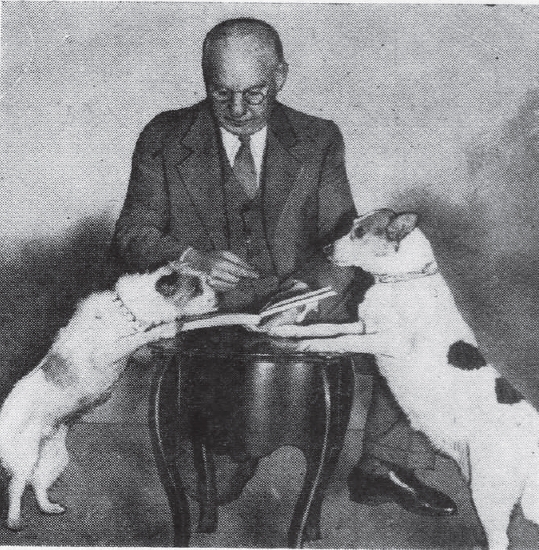Gone are the days when Grandmaster Flash would go to great lengths to mask his DJing tricks. Long considered one of the pioneers of hip-hop, Flash is at a point in his career where he’s ready to share some of his secrets.
“I don’t wanna just play songs for you anymore. That doesn’t interest me,” Flash said during an interview at the Bryant Park Corporation’s headquarters in midtown last week. Wearing a blacked-out Yankees cap and blazer, the artist requested hot tea and made it clear he’s now interested in chatting about his creative process. “You have to get something out of [a performance] and at least understand how serious this art form is. Other than that, I’m not interested. I turn down gigs all the time.”
Flash, who rose to fame in the ‘70s, plans to “pull out all the stops” as the headliner of Bryant Park’s second annual Barefoot Ball set for July 26. The dance party is expected to draw more than 2,000 attendees, according to Bryant Park. It reminds the artist of one of his old-school block parties – just with a $75-per-ticket price tag.
“I haven’t done a block party in decades because of the climate, the way things are,” he explained while pouring two sugars – the real kind, no artificial fillers – into his tea. “You can’t just do things like that without basically worrying about weird things happening.”
Flash – who said he used to soak his records in the tub before hitting a party to switch the labels so competing artists couldn’t steal his sound – isn’t into hiding his technique from his fans these days. He talked of his plans to have a “massive video wall” at Barefoot Ball to give fans a front-row look at his mixing, no matter how far away they’re standing.
“You’re going to see me physically doing work. You’re gonna say, ‘oh, s—! I got that record at home, but it doesn’t sound like that. He’s un-cutting it and pasting it,’” he said, referring to his innovative quick-mix theory that involves locating the heat, or hottest part of a track, and replaying it by overlaying two of the same record.
Flash’s theory was a technique that led to the rise of hip-hop in NYC in the ‘70s, which he portrayed in the canceled Netflix series, “The Get Down,” produced by Baz Luhrmann. Back when vinyl records were handled with care, Flash was using sewing needles to produce unique sounds and crayons to mark hot tracks.
“I was disrespected because vinyl was held like a child – very carefully,” he said. “I was hated. It was like, ‘How dare you desecrate vinyl?’ I would take crayon and draw where the drum part was because I didn’t want to take too long searching for the area. These things later became part of the culture of the genre.”
But his “disrespect” for vinyl was rooted in admiration. Flash said he “fell in love” with his father’s record collection when he was “just a tot.”
“He had this closet where he had these plastic things that were in paper sleeves and I was so intrigued,” he said. “The rule in my house was to never go in that closet. So, I used to watch my father as he went to work on the Long Island Rail Road. He had this holster with tools, so I would wait early in the morning for the tools to go over his shoulder and hear, clink! I’d hear the door open and slam, bam! When I heard those two things, I would get a chair out of the kitchen, go to his closet and take the discs over to the stereo. That was how I basically fell in love with it.”
After becoming “public enemy No. 1” in his household for messing with the stereo and household appliances, Flash’s parents sent him to the Bronx’s former Samuel Gompers High School to study electrical engineering. His interest in the mechanical aspect of music continued through his teenage years when he realized the tracks he heard other artists perform on the streets sounded “incomplete.”
“To me, every song has a great part, and that’s when the drummer gets a solo. I had to figure out a way to take just a drum solo from all these different genres and play just that for the audience because that was the most climactic part,” he said. “That later led to people speaking on these elongated parts. That could be considered the creation of rap. Doing this with my finger and controlling the track, that could be considered turntablism. I didn’t know I was inventing these things when I was a kid.” He drew circles with his finger on the table in front of him to demonstrate the turning motion of a record.
Flash went from a child defacing his father’s prized record collection to a hip-hop pioneer with more than 10 albums behind him. Though he largely credits his success to his experience within his own household, he said his music influence was rooted in his Bronx upbringing.
“[Hip-hop] was a Bronx thing forever, in that nobody knew what it was and nobody cared because disco was a big thing,” he said. “It was just this teeny city where we kind of did our thing.”
Flash broke down a few places in the Bronx, some now shuttered, that he said had an impact on his growth in the industry.
927 Fox St.: Flash’s building became the unofficial marker of his turf. He held his first block party here, right outside his home, in the late ‘70s. “We all had territories in the Bronx,” Flash said. “So, I had one area, Herc had an area, Bam had an area and then DJ Breakout had an area. From that point on, all of our understudies sort of branched out and made that a thing.”
Disc-o-mat and Downstairs Records: Both formerly found in midtown Manhattan, Disc-o-mat, 474 Seventh Ave., and Downstairs Records, 1026 Avenue of the Americas, were Flash’s go-to shops when a new track dropped. “Downstairs Records was probably the most important because this was the premiere shop and these guys were so in tune with what it was that we were looking for. Whenever myself or Bam or Breakout wanted something different, they’d get in contact with us. The way the record shop was designed, it was the public area and then it was the area in the back where the heat was.”
63 and 23 Park: Local parks, referred to by Flash as 63 Park, found at the corner of 168th Street and Boston Road, and 23 Park, at the corner of 163rd Street and Tinton Avenue, were popular spots for block parties. “At that time, this was a place where I could try new music on you,” Flash said. “If you keep dancing, I got something. It’s time for me to take it and soak it in the bathtub.”
The Black Door: Lines used to stretch around the block at a small nightclub, The Black Door, which once stood near Boston Road and 170th Street in the Bronx. “It was probably the size of two, three average bathrooms and held like 100 people,” he said. “We could never fit everybody in. But between 9 and 10:30, if you wasn’t on line, we’d be opening the doors at 4 in the morning getting cursed out. ‘Flash, I’ve been standing out here forever tryin’ get in!’ ”
That tiny club was the site of Flash’s first paid performance. “It was my humble beginnings because there was this group of brothers that was watching me when I played in the park. They walked up on me and they said listen, we could put you in a place inside and you could charge people. They kind of forced me and cornered me. They were like the gangstas of the neighborhood. The rest was kind of history.”
The step – or steep – streets: Found along Edward Street and Grant Street in the Bronx, streets that had steep steps leading from one road to another became a popular hangout for teens. “It was steep steps if anything. It was a very tough angle and it took you minutes to get up those steps,” Flash said. It was a “very memorable place if you came out of a party 4 a.m. Ahh, that was a nightmare to walk up.”






































